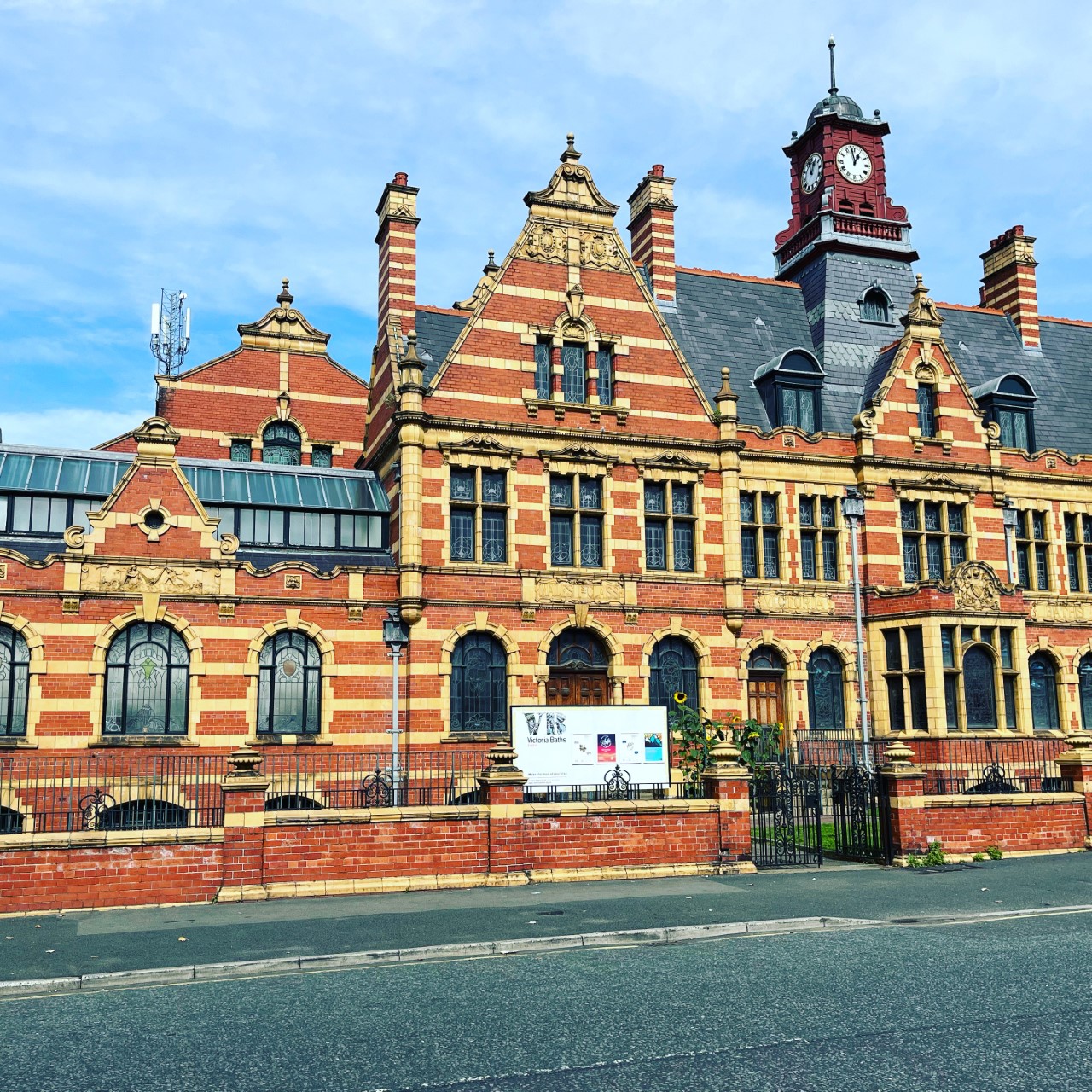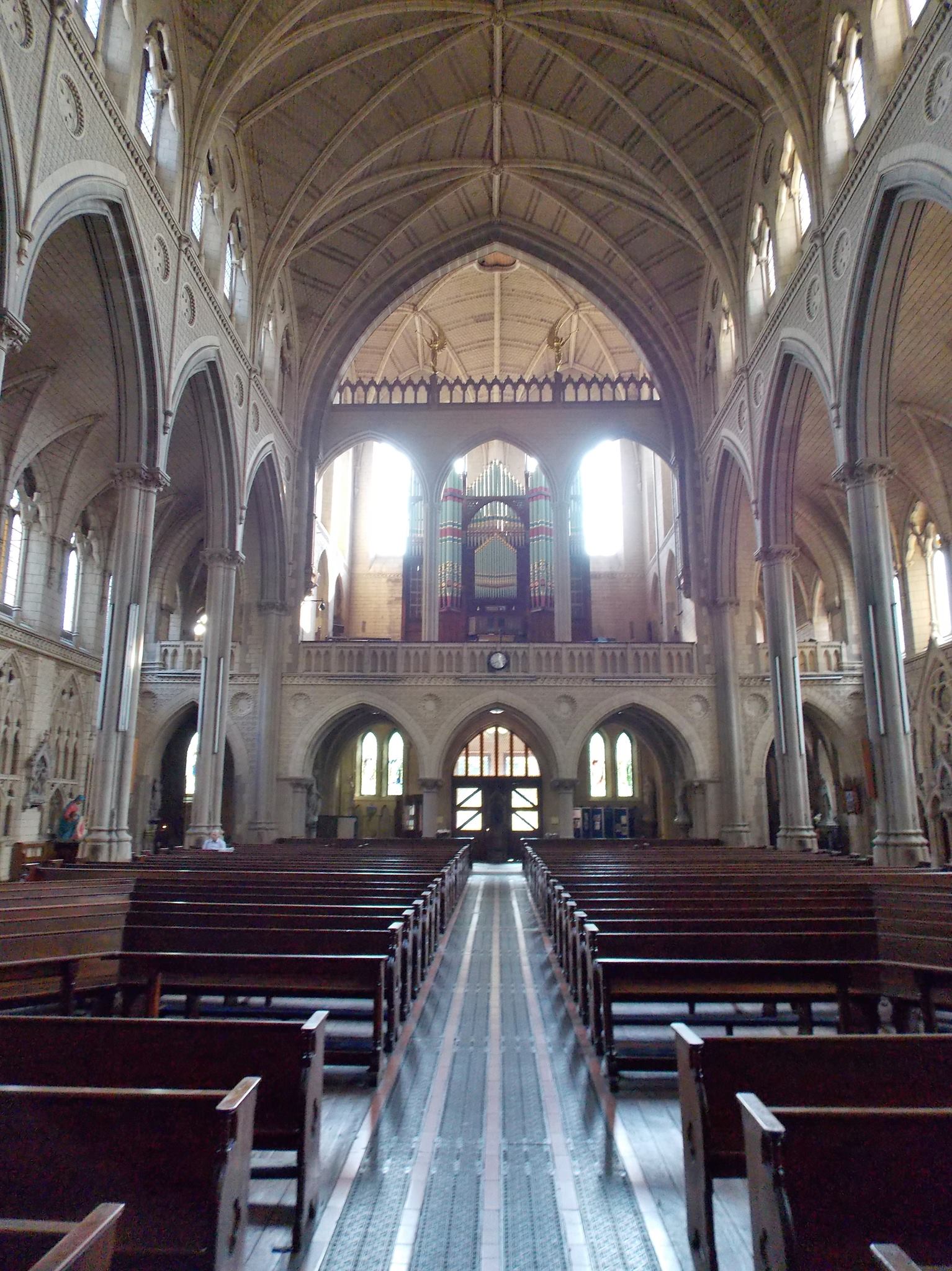There is a painting hanging in Bury Art Museum which, once seen, is never forgotten. It is the heartbreaking scene of a young deer suckling its mother, a trail of bloody footprints in the snow leaving the viewer in no doubt as to the fate of the doe.
Despite its grim subject matter, Sir Edwin Landseer’s The Random Shot is one of the gallery’s most popular works. The striking imagery stays with you for long after.
“People who came here as children tell us that’s the painting they remember,” says Richard Burns, curator at Bury Art Museum. “It is the most memorable.”
Burns has been working at the museum for nearly 25 years and, when we meet in the café it’s clear to see that he has lost none of his enthusiasm for the place.
“Behind the scenes, we are just four members of staff but we do have part-time and temporary staff as well. There are three strengths to the museum – the building, the collection and the staff. We continue to develop all three.”
 Lancashire’s Bury Art Gallery and Museum owes its existence to the public spirit and generosity of three individuals: Emma, Oswald and Frederick Wrigley. To commemorate Queen Victoria’s Diamond Jubilee in 1897, they presented the town of Bury with a valuable collection of oil paintings, watercolours, statuary, engravings and Wedgwood plagues assembled by their father, Thomas Wrigley, owner of a paper mill and a shrewd collector of art.
Lancashire’s Bury Art Gallery and Museum owes its existence to the public spirit and generosity of three individuals: Emma, Oswald and Frederick Wrigley. To commemorate Queen Victoria’s Diamond Jubilee in 1897, they presented the town of Bury with a valuable collection of oil paintings, watercolours, statuary, engravings and Wedgwood plagues assembled by their father, Thomas Wrigley, owner of a paper mill and a shrewd collector of art.
Wrigley senior was an important figure and a prolific writer and campaigner. Among his many activities, he agitated for the removal of import duty on raw materials for making paper and for the removal of stamp duty on newspapers. He wrote on railway management and reform and proposed a general education system years before the passing of the Education Act in 1870. A magistrate, Wrigley rose to become Sheriff of the County Palatine of Lancaster and was chairman of the Liberal Party in Bury. It is thanks to him that Bury is home to such an impressive collection of art.
But the Wrigley bequest was on condition that the town should provide a building suitable to house it and so, in 1899, the foundation stone was laid for what would become, two years later, the Grade II listed structure still standing today.
It’s a beautiful building, both for its simplicity and restrained grandeur. Mosaic floors and stained glass windows sit happily alongside an imposing stone staircase, and each room is flooded with light. A sympathetic £1.2 million refurbishment in 2005 brought the museum, art gallery and adjoining library all under one roof, including a new archives centre which, based on a radical re-think, uses artefacts, documentation and art to tell the story of the town. 
But Bury Art Gallery doesn’t rest on its Victorian laurels. While much of its collection comprises work of the better known British artists who flourished in the first half of the 19th century (and includes such luminaries as Turner and Constable), there is also a commitment to contemporary art.
Burns explains: “It is vital to support contemporary art. When I started here in 1990, the building had just been decorated. We hung Victorian paintings throughout and it was deadly, it was ghastly. So since then we have had always had a mix. We show local artists and the local photographic society and local arts society both have annual exhibitions. But the quality is very important…what we like to do here is challenge visitors. Our energies are devoted towards temporary exhibitions. We do change the hang from time to time. Only a tiny percentage, less than 5 per cent, of the collection is on show at any one time. That’s normal for a gallery. Some of the temporary exhibitions are drawn from the collection.”
Turner’s Calais Sands at Low Water: Poissards Collecting Bait is undoubtedly the most expensive picture in the gallery. Described as ‘a poem in paint’, it was exhibited at the Royal Academy in 1830 and much praised by the leading art critic of the time, John Ruskin. Wrigley senior bought it in 1872 for £1,785. It’s safe to say that the painting is worth considerably more today.
 Other local favourites include Sir George Clausen’s Spring Morning: Haverstock Hill and John Constable’s Hampstead Heath. Time your visit right and you might be lucky enough to see special exhibitions, among them Tove Jansson’s original Moomin illustrations and Polari Mission, an exploration of one of the world’s most endangered languages – an eclectic gay slang. There’s even going to be a Bibleathon using the only extant version of The King James’ Bible translated into Polari.
Other local favourites include Sir George Clausen’s Spring Morning: Haverstock Hill and John Constable’s Hampstead Heath. Time your visit right and you might be lucky enough to see special exhibitions, among them Tove Jansson’s original Moomin illustrations and Polari Mission, an exploration of one of the world’s most endangered languages – an eclectic gay slang. There’s even going to be a Bibleathon using the only extant version of The King James’ Bible translated into Polari.
But having such wonderful and important works is not enough to ensure a gallery’s survival. “We completely reviewed our practices when threatened with cuts,” says Burns. “We decided we needed to demonstrate that this organisation is important. One way of doing that is proving we can generate income.”
In an admirable act of largesse, the gallery is funded entirely by the local authority, although it does pull in some grant aid as well. It costs about £200,000 a year to deliver all the services, a trifling amount when compared to other museums. But a new shop (opened two years ago) and an ambitious lending programme have gone some way to boost the coffers.
“Open-mindedness is part of our philosophy,” explains Burns. “As a small organisation we can take risks and we do. For instance, we recently organised an exhibition tour to China. We loaned about 25 pictures from here. The tour generated income and at the end of the show we were able to distribute the income to the lenders…the challenge is to focus on what’s important. We have realised that we have to demonstrate our capability to generate income, we don’t want to be seen as a dead weight. We support initiatives in the borough that promote cultural regeneration. We could, should and do play a part in all this.”
Burns adds: “We are looking at how we integrate ourselves more in the life of the town. We need to be seen as indispensable. So, for example, we do a regular programme of workshops and talks. What we have achieved over the past couple of years would imply that we are in fact valued and are seen as a valuable part of the cultural offering of the town.”
Bury Art Gallery welcomes 45,000 visitors a year. You could be one of them.
Main image: Maurizio Nannucci – Language and Horizons
Where: Moss Street, Bury, Lancashire
https://www.facebook.com/buryartgallery, http://buryartmuseum.com/
Polari Mission is on from April 5, 2014 – August 23, 2014












